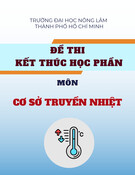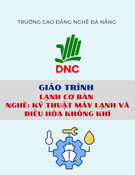
REGULAR ARTICLE
Influence of the dissolved hydrogen concentration on the
radioactive contamination of the primary loops of DOEL-4 PWR
using the OSCAR code
Mehdi Gherrab
1,*
, Frédéric Dacquait
1
, Dominique You
2
, Etienne Tevissen
1
, Raphaël Lecocq
3
, and Kim Schildermans
3
1
CEA, DEN, 13108 Saint-Paul Lez Durance, France
2
CEA, DEN, 91191 Gif-sur-Yvette, France
3
ENGIE, LABORELEC, 1630 Linkebeek, Belgium
Received: 17 January 2019 / Received in final form: 9 June 2019 / Accepted: 22 January 2020
Abstract. Corrosion products are generated in the primary circuit during normal operation and are activated in
the core. Those activated corrosion products, mainly
58
Co and
60
Co (coming respectively from the activation of
58
Ni and
59
Co), are then transported by the primary fluid and deposited on the out-of-flux surfaces (steam
generators, primary coolant pipes…). To minimize this radioactive contamination, one needs to understand the
behavior of corrosion products by carrying out measurements in PWRs and test loops combined with a reactor
contamination assessment code named OSCAR. The aim of this article is to evaluate the influence of the change
in the Dissolved Hydrogen (DH) concentration on the contamination of the primary loops of DOEL-4 PWR, a
Belgian unit. After the description of the principle of the OSCAR V1.3 code, its use is illustrated with the
simulation of DOEL-4. Finally, those calculations are compared to autoclave experiments called DUPLEX with
thermodynamic and chemical conditions closed to those observed in PWRs. OSCAR V1.3 calculations show that
an increase in the DH concentration results in a decrease in
58
Co surface activities. These results are consistent
with those from the DUPLEX experiments. Finally, an increase of the DH concentration is then recommended in
operating PWRs to reduce the
58
Co surface contamination.
1 Introduction
Understanding the PWR primary circuit contamination by
corrosion products, fission products and actinides are a
crucial issue for reactor operation and design.
The OSCAR code takes into account the chemical and
physical mechanisms in operating reactors or at design
stage. This code has been developed with this aim by CEA
in collaboration with EDF and Framatome, and has
actually been used since the early seventies [1].
OSCAR is a reliable tool for PWRs (also used for EPR,
SFR, ITER [2], decommissioning, etc.) calibrated and
validated with a complete database of contamination
measurements on EDF fleet [3,4].
Water chemistry has an influence on corrosion [5] of the
main materials (especially nickel-based alloys); in the
Belgian PWRs the average dihydrogen concentration used
is around 30 mL/kg, which is not the best value to mitigate
stress corrosion cracking of the materials. It also has an
influence on dissolution/precipitation mechanisms in-
volved in contamination.
Water chemistry control may allow reducing signifi-
cantly the radioactive contamination in the primary loops
and therefore facilitating maintenance operations.
In this field, dissolved hydrogen (DH) plays a critical
role in limiting the presence of oxidizing species due to
water radiolysis [6]. Increasing DH could also reduce core
internals cracking [7].
The aim of this study is to evaluate the influence of the
DH on the contamination of the primary loops using the
OSCAR code.
This study presents the results of a sensitivity analysis,
using the 1.3 version of the OSCAR code, of the
contamination of the primary loops of DOEL-4 PWR
with DH concentrations ranging between 15 and 70 mL/kg.
The variation of the surface contamination in
58
Co and
60
Co are calculated on the hot legs, crossover legs and steam
generators (SG) tubing. In order to explain those variations,
the equilibrium Ni concentration in solution (assuming the
thermodynamic equilibrium in the coolant with respect to the
considered oxide inner or outer) and the Ni concentrations in
solution are calculated in the SG and fuel regions.
The Ni dissolution (from the deposit/outer oxide to the
ions) and the corrosion release (directly from the metal to
the ions) flux of the SG are also calculated.
*e-mail: mehdi.gherrab@cea.fr
EPJ Nuclear Sci. Technol. 6, 7 (2020)
©M. Gherrab et al., published by EDP Sciences, 2020
https://doi.org/10.1051/epjn/2020005
Nuclear
Sciences
& Technologies
Available online at:
https://www.epj-n.org
This is an Open Access article distributed under the terms of the Creative Commons Attribution License (https://creativecommons.org/licenses/by/4.0),
which permits unrestricted use, distribution, and reproduction in any medium, provided the original work is properly cited.

The equilibrium concentration in solution of each
chemical element and the oxide speciation of the deposit
are calculated by the OSCAR chemistry module,
PHREEQCEA (a version of the PHREEQC code [8]
extended to the PWR temperature range) in combination
with a thermodynamic database developed by the CEA [9].
PHREEQCEA determines the composition of the ideal
solid solution (mixed oxides and any pure solid phases
possibly in excess) and the equilibrium concentration in
solution of each species in relation to the chemical
conditions (pH, H
2
,O
2
), the coolant temperature and
the masses of the metallic element of the deposit in each
regions. One may note in this article that the dominant
species in solution is NiOH
+
for Ni and Co(OH)
2
for Co.
This article also presents autoclave experiments to
evaluate the impact of several DH values on alloy 690
material, which are compared to simulation results.
2 The OSCAR Code
For corrosion products, the source term is the consequence
of the corrosion of the base metals. The corrosion leads to
the formation of oxide layers and induces the release of
dissolved metals in the primary coolant. The main
metallic elements taken into account are those composing
the main alloys found in PWR primary system: Ni, Co, Fe,
Cr and Mn.
The OSCAR modeling is based on the subdividing of
the PWR circuits into elementary regions (cf. Fig. 1):
–each region is defined by its geometric, thermal, neutron
and hydraulic characteristics and by its base metal.
These characteristics are the main input data required for
an OSCAR simulation;
–each region is characterized by six media: the base metal,
the inner oxide layer, the deposit/outer oxide layer,
particles, ions (species in solution) and purification media.
The OSCAR calculation consists in the resolution of the
mass balance equations for each isotope in each medium of
each region using the following equation:
∂Mj
i
∂t¼X
Source
JmX
Sink
Jmþ_
min _
mout
with Mj
ithe mass of the isotope (i) in a given medium (j)
[kg], tthe time [s], ( _
min _
mout) the convection term
[kg ·s
1
] and J
m
the mass flux between two media [kg ·s
1
].
The variations of the concentrations of the species in the six
media result from corrosion, release diffusion, convection,
activation, purification, radioactive decay mechanisms and
the exchange flux between the media.
Figure 2 describes the different media and mass rates in
a region. The main mechanisms involved in the transfers
between the six media are dissolution/precipitation
(between deposit/outer oxide and ions), erosion, deposi-
tion (between deposit/outer oxide and particles) and
release directly from the metal to the ions. Dacquait et al.
[3] have reported a detailed description of these
mechanisms.
Fig. 1. Control volumes of a typical PWR (HL: Hot leg / SG: Steam generator / COL: Crossover leg / RCP: Reactor coolant pump /
CL: Cold leg).
2 M. Gherrab et al.: EPJ Nuclear Sci. Technol. 6, 7 (2020)

The dissolution of a deposit occurs when the concen-
tration of a soluble species in solution is less than its
equilibrium concentration in solution. Soluble species
precipitate when their concentration in the coolant reaches
their equilibrium concentration in solution.
3 Operating parameters of DOEL-4
DOEL-4 is a 3-loop PWR equipped with alloy 600 tubed
steam generators then with alloy 690 after the steam
generator replacement at cycle 11. The weight composition
of alloy 600 and 690 is reported in Table 1.
The structure of the DOEL-4 primary circuit is modeled
by control volumes using the design data of the reactor
(wetted surfaces, hydraulic diameters, material composi-
tions, nominal temperatures…).
Operating cycles of DOEL-4 are simulated using the 1.3
version of the OSCAR code with the real hydrogen
concentration for cycles 1 to 22. Three additional reference
cycles are calculated for DOEL-4 to test various hydrogen
concentrations.
The parameters of the reference cycles are reported in
Table 2.
The operating parameters (Power, C
B
,C
Li
,C
H2
,C
O2
)
are given in Figure 3.
The last three cycles correspond to the reference
cycles with a simulated shutdown at the end of each cycle.
Power is set to 100%, the boron concentration decreases
at each cycle from 1424 pm to 157 ppm, the lithium
concentration decreases from 3.35 ppm to 0.59 ppm.
Concerning hydrogen, three cases are studied 15, 30 and
70 mL/kg with a stable value during the three cycles for
each case. The oxygen peaks are due to the simulated
shutdowns.
4Influence of the DH concentration on the
calculated contamination of DOEL-4 PWR
Calculated
58
Co and
60
Co surface activities inside the
primary system (Hot leg, Crossover leg, hot side of the
steam generator tubing and cold side of the steam
generator tubing regions) are presented in Figures 4–7.
Concerning
58
Co, it is clear that an increase of the DH
value leads to a decrease in the surface activities in the
primary system for the last three cycles of DOEL-4.
Concerning
60
Co, the decrease tendency is slight.
For DH concentrations of 15 and 70 mL/kg, the relative
variations of the deposited activities (of
58
Co and
60
Co) on
the out-of-core surfaces at the end of cycle 25 compared to a
DH value of 30 mL/kg are presented in Table 3.
The increase in the DH concentration up to 70 mL/kg
leads to a decrease in the deposited activities of
58
Co and
60
Co, respectively, by 57% and 4%.
On the contrary, a decrease in the DH down to
15 mL/kg leads to an increase of the deposited activities
of
58
Co and
60
Co, respectively, by 74% and 4%.
This table shows that the DH concentration signifi-
cantly affects the
58
Co contamination of the out-of-flux
surfaces and to a negligible extent the
60
Co contamination.
It also shows that an increase in the DH concentration
(from 15 to 70 mL/kg) leads to a decrease of the deposited
activities of
58
Co and
60
Co.
5 Comparison between the Ni equilibrium
concentrations and Ni concentrations inside
the core and steam generator tubing regions
When the DH concentration goes from 15 to 70 mL/kg, the
Ni equilibrium concentration and Ni concentration inside
the hottest core region change (see Fig. 8).
For DH concentrations of 15 and 30 mL/kg, Ni
equilibrium concentrations are equal. Ni concentrations
are above Ni equilibrium concentrations which means
that Ni tends to precipitate in the hottest core region
and even more for 15 mL/kg (widening of the gap
between Ni equilibrium concentration and Ni concen-
tration) than for 30 mL/kg. This
58
Ni that precipitates
onthefuelrodsisactivatedin
58
Co, eroded and
transported by the primary fluid, makes deposits on the
out-of-flux surfaces, for example in the steam generator
(see Fig. 7).
Table 1. Weight composition of alloy 600 and 690 tubed
steam generators.
Composition of tubed steam
generators (wt. %)
Alloy 600 Alloy 690
Ni 74.95 60.2
Fe 9 9.77
Cr 15 28.91
Mn 1 0.3
Co 0.05 0.009
Fig. 2. Mass transfers between the different media in a region.
M. Gherrab et al.: EPJ Nuclear Sci. Technol. 6, 7 (2020) 3

Table 2. Parameters of the reference cycles.
Nominal power Cycle duration B
init
Li
init
DH pH
100% 473 days 1424 ppm 3.35 ppm 15–30–70 mL/kg 7.2 (at 312 °C)
Fig. 3. DOEL-4 operating parameters.
4 M. Gherrab et al.: EPJ Nuclear Sci. Technol. 6, 7 (2020)

On the contrary, an increase in the DH value up to
70 mL/kg, leads to smaller Ni equilibrium concentration
and Ni concentration in solution are smaller. Ni concen-
tration in solution is lower than the Ni equilibrium
concentration in solution, and then Ni tends to dissolve
from the deposit on the fuel rods into the reactor coolant.
When the DH concentration goes from 15 to 70 mL/kg,
equilibrium Ni concentrations in solution and Ni
concentrations in solution on the cold side of the steam
generator tubing evolve (see Fig. 9).
Equilibrium Ni concentrations in solution and Ni
concentrations in solution decrease when the DH increases
(for DH concentrations of 15 and 30 mL/kg, Ni concen-
trations in solutions are equal).
For each DH values, Ni concentrations in solution are
much lower than the equilibrium Ni concentrations in
Fig. 4. OSCAR V1.3 calculation Surface activities in the Hot leg region of DOEL-4.
Fig. 5. OSCAR V1.3 calculation Surface activities in the crossover leg region of DOEL-4.
M. Gherrab et al.: EPJ Nuclear Sci. Technol. 6, 7 (2020) 5









![Ngân hàng trắc nghiệm Kỹ thuật lạnh ứng dụng: Đề cương [chuẩn nhất]](https://cdn.tailieu.vn/images/document/thumbnail/2025/20251007/kimphuong1001/135x160/25391759827353.jpg)






